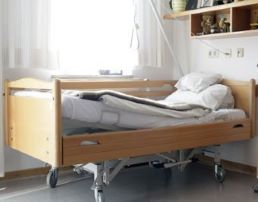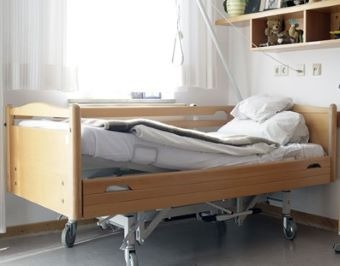What Families Need to Know About Bedsores and Nursing Homes


Bedsores are a common sight in nursing homes where residents receive poor care due to neglect. Their health is at-risk and families need to take action to remedy the situation or their loved one’s life could be in danger. Nursing home residents with bedsores often face other difficulties which could go unnoticed or may be harmed in other ways and haven’t talked about it yet. Bedsores are a visible indicator of deep, systemic abuse, and must be investigated fully if your loved one ever experiences them.
What is a Bedsore?
A bedsore, also known as a pressure wound, is a destruction of the tissue that occurs on parts of the body that remain under pressure for an extended period of time. They commonly occur on parts of the body where skin and bone are in close contacts, such as on hips and elbows. Bedsores are common in nursing homes and affect about 1 in 10 nursing home residents. They can become life-threatening once they get infected, which can happen easily due to the attendant neglect which caused them in the first place.
What Causes Bedsores?
Bedsores are caused by pressure on a part of the body which cuts off blood flow to the affected tissue. Eventually, it rots, leading to an open sore that is vulnerable to further infection. Nursing home residents are especially vulnerable to them due to their sedentary lifestyles. They may rely entirely on assistance to move, and when they are neglected, they are left to remain in the same position, leading to bedsores.
What are Risk Factors for Bedsores?
Some people are more at risk for bedsores than others, but they are especially common among those who lack mobility or who are generally sedentary. However, they can even impact people who may be active on their own but who leave a limb in one position for too long. Some of the common causes of bedsores are the following:
- Dehydration
- Friction
- Malnutrition
- Lack of repositioning
- Shear
- Moisture
- Lack of sensitivity
Shear and friction are especially dangerous to those who are sedentary and are primary causes of bedsores. Shear occurs when the skin and bone move in two separate directions and may happen due to improper positioning on the bed or rough handling by attendants. Friction can occur when bedding rubs against a person’s body in such a way as to deprive the affected skin of oxygen. Nursing homes can take steps to prevent friction, such as by using cornstarch on sheets or making sure that sheets, bedding, slippers, and clothing are generally comfortable.
What Should You Do if a Loved One Has Bedsores?
If your loved one has bedsores, then it’s important to seek out medical attention for them as soon as possible. You’ll also want to speak with a Florida nursing home abuse lawyer. They can help to identify the causes of your loved one’s bedsores and who is responsible for them and pursue compensation on behalf of your family.
Bedsores can be extremely painful and even life-threatening, so if your loved one has any, it’s important to seek help for them as soon as possible. Bedsores can indicate a severe level of neglect that your loved one is facing and may indicate deeper problems that you don’t know about or may have had a feeling were occurring but no solid proof. An investigation can determine what your loved one is facing in their home and the best ways to overcome those challenges. With compensation, you and your loved one can begin a road to recovery, or if your loved one has passed, can help their survivors rebuild their lives.


